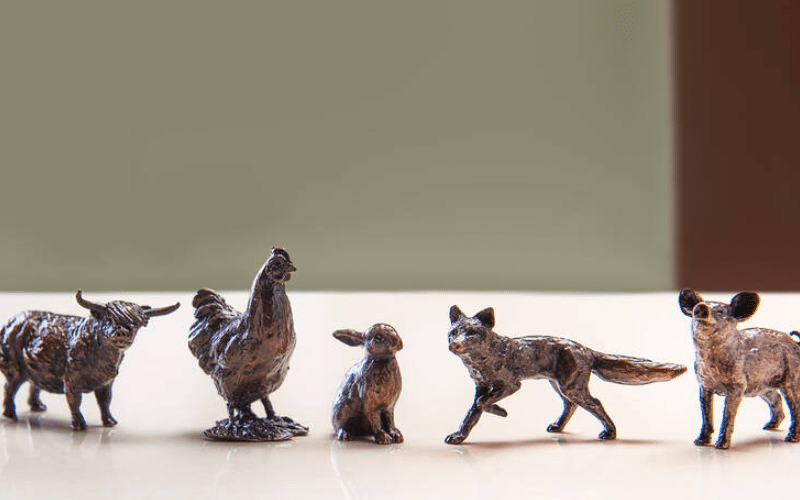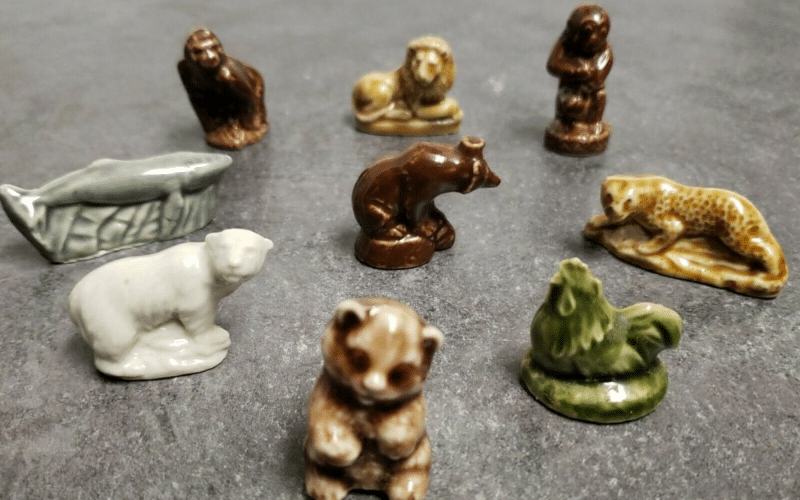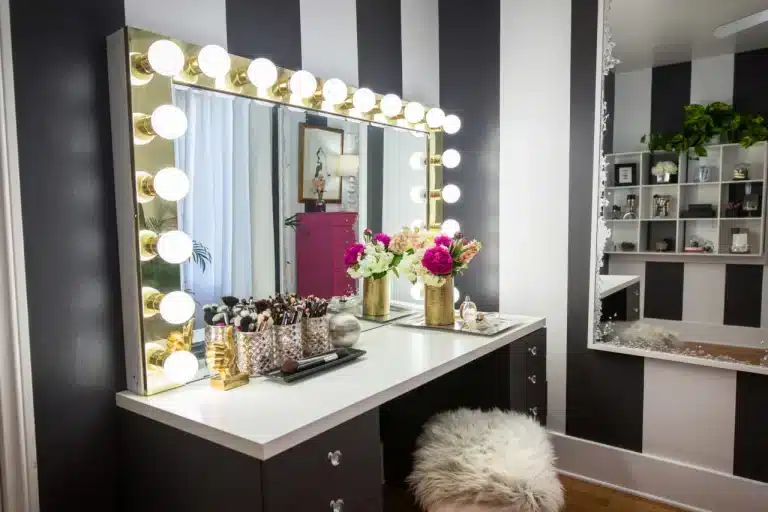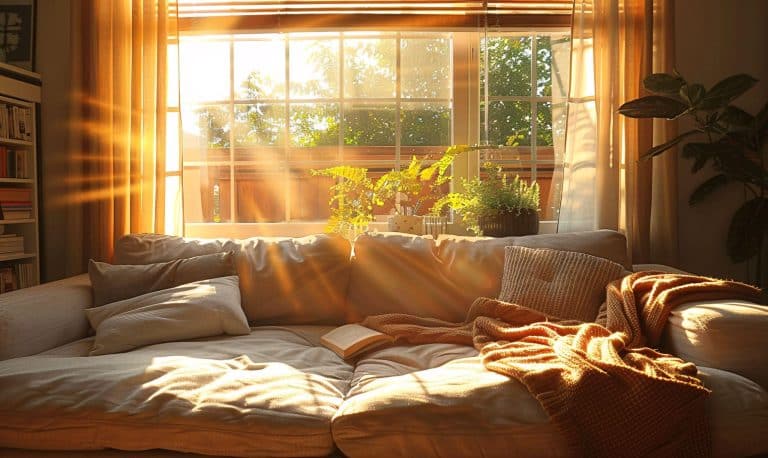Collecting figurines is a fun niche hobby for those who appreciate fine art and craftsmanship. Some enjoy displaying mini versions of their beloved Disney characters, others collect beautiful porcelain dolls like the ones grandma used to have, and some enjoy the intricate designs of tiny glass birds. Regardless of your style, this is a fun activity that lets you infuse your interior with your passions and interests.
Step into the magical world of animals with these collectible sculptures made from durable materials like glass, silver, bronze, etc. They’re crafted with meticulous attention to detail and each piece seems to come to life before your eyes.
The elegant glass sculptures capture the grace of birds mid-flight, while the majestic elephants, crafted from durable metals, command attention with their proud stance. The adorable rabbit and frog figurines capture the unique charm and personality of these animals and evoke positive emotions.
What’s the Difference Between Figurines and Toys?
Although certain vintage toys are collectible and have a high value, they’re not the same as a collectible sculpture or figurine. The latter is a highly valued item that you usually showcase in a box, case, or cabinet. It serves as home decor, and it’s not something you play with. Vintage toy collectors and those who look for old collectible figurines aren’t the same people.
Some brands of antique toys make products that may someday become valuable figures, but this doesn’t make them classify as the same thing. Figurines are sometimes incorrectly referred to as antique toys, but it’s crucial to understand the differences when you start your collection so you can speak with collectors in their tongue.
History of Sculptures
Sculptures have held a special place in human history. They captivate hearts and minds with their timeless beauty and artistry. From ancient civilizations to modern-day masterpieces, these three-dimensional works of art have left people in awe for centuries.
Whenever you walk through a museum, you come face to face with sculptures that seem to transcend time itself. The graceful curves and intricate details of these works of art tell a story, evoke emotions, and spark the imagination.
Modern collectible sculptures are rich in history and still evoke admiration and amazement. Contrary to popular belief, they’re not the same thing as vintage toys. Little sculptures have traditionally been made by civilizations all over the world, usually showing nobility or deities.
Once this creative concept made its way to Europe around the 18th century, people started displaying porcelain figurines as a part of their interior décor. From that point on, people started collecting and showcasing action figures and highly sought-after Hummel figurines in their households all over the world.
How Much are Figurines Worth?
Making a sculpture collection is a fun activity and it doesn’t require as much money as you’d think. Depending on the model you’re looking for, the cost of these items varies greatly, ranging from as little as ten dollars to hundreds of dollars. The item’s worth is impacted by different variables, such as the brand, the material it’s composed of, and the level of detail.
Some figurines are more expensive than others. Certain rare pieces can fetch up to several thousands of dollars. However, you can often find sculpture collectibles at a lower price if you look for sales online or visit a flea market.
Why Do People Collect Animal Sculptures?
Depending on your preferences, you can use animal sculptures and figurines for symbolic or ornamental reasons, or simply collect them. However, most people are interested in collecting them. The emotional connection that comes with acquiring animal miniatures transcends the monetary worth of the pieces.
For many individuals, this brings back pleasant memories of past pets and immortalizes those experiences. However, a lot of people collect these items only for the sake of collecting, which fosters a strong feeling of community.
Creating an animal sculpture collection is incredibly inspiring and intriguing. They can serve as the perfect presents for your loved ones for different occasions or serve as keepsakes for trips. If the giftee is also a collector or a pet lover, these items can strike a chord and surprise them.
Enthusiasts of animal figurines are never satisfied. This is because each new design that comes out is even more alluring and more detailed than the last one. They can wind up investing a lot of money into these figurines.
The captivating and compulsive hobby of collecting animal miniatures can bring you much happiness and fulfilment. All you should do is use a little caution while making purchases. A pet lover or collector has no limits to how much happiness they can get from browsing through a collection of miniatures that brings back memories from the past.
Animal sculpture collectibles have a unique history that goes back several millennia. There are many animal statues scattered over Asia and Africa, each with a rich religious tradition. These sculptures portrayed certain religious and cultural customs. If you ever visit these locations, you can find copies of these antique miniatures, which you can purchase and keep.
Displaying Tips
Showcasing your sculpture collection can infuse personality and intrigue into your space. This way, you and your family can continue to appreciate their beauty:
- Less is more: People frequently make the rookie error of packing a lot of items into a tiny space. Give each figurine some room to breathe and keep them at a certain distance from each other when arranging them. This helps create a sense of unity and ensures that each figurine is noticed and appreciated;
- Organising units: Don’t arrange your miniatures randomly. Instead, arrange a group of similar objects in a semicircle with one focus point. Place the larger items in the back and the smaller ones in the front;
- Dedicated display case or cabinet: You can find various display cases online in a variety of sizes and styles. Since people often keep miniatures close to the front of shelves, these cabinets are shallower than ordinary storage cabinets, so you won’t waste any space. Make sure to leave enough room above your sculptures, and don’t pile too many items close together so that your display doesn’t look cluttered. I recommend going for a glass-fronted cabinet as it will reduce dust accumulation and minimise accidents;
- Use lighting: Turn your sculpture collection into the focal point of the room by adding lights. Many display cases already include illumination, as this accentuates intricate features on your miniatures. You should generally avoid spotlights, backlights, and overhead illumination as they can create ugly shadows that block your vision. On the other hand, diffused lights enhance details and eliminate shadows.











